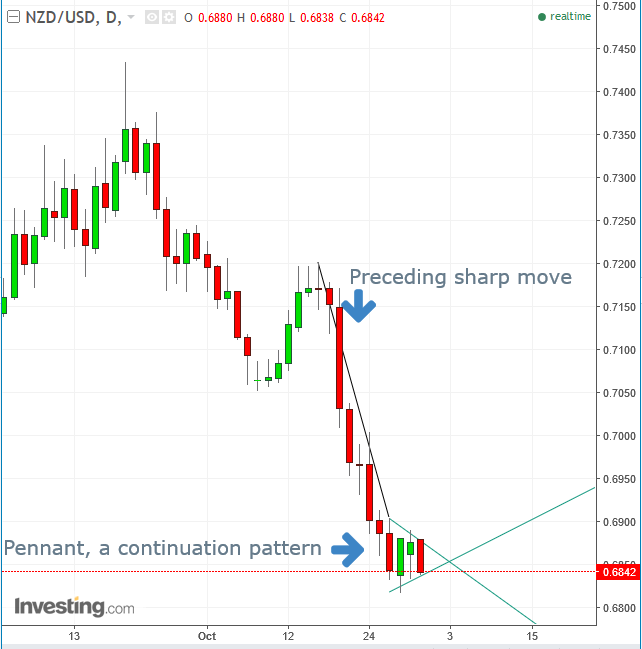by Pinchas Cohen
Kiwi Takes A Dive
The dollar is on the rise today, up 0.2 percent as of 7:00 EDT, at its height for the day, signifying that bulls are still in charge. It pared almost half of yesterday’s 0.50 percent decline, but more importantly it bounced back after having nearly been up 13 pips, or 0.14 percent, from the H&S bottom. Still, the breakout penetration was only 0.90 percent, not even satisfying an aggressive filter in avoiding a bull-trap.
The market narrative attributes the rise to investors assessing developments on US tax reform as well as their awaiting details of the next Fed Chair. It also stresses a euro decline as data showed inflation unexpectedly slowed in the euro-area.
However, the fact is that the common currency declined just 0.17 percent, the least among the major currencies, while New Zealand's kiwi declined the most, 0.53 percent.
Data showed that China’s official manufacturing PMI slipped to 51.6 in October from 52.4 the previous month, which was a 5-year high. China is New Zealand’s second biggest export partner, after Australia.
Additionally, news reports abound of New Zealand's desire to stop foreigners from buying homes there, in order to cool housing prices. That would cut a rising source of demand for its currency.

The kiwi just went through a 5 percent free fall, from 0.72 to 0.6818, between October 17 and October 27. In the last four sessions bears have released their foot from the short-accelerator to catch their breath and try to figure out if that was a fluke or part of a pattern. A downside breakout out of this pause would signal a repeat of the previous drop, in distance as well as duration.
Trading Signals
Conservative traders would wait on a short for a decisive downside breakout, followed by a return-move and proof that the pattern forms a support, with a close that covers at least the preceding corrective day.
Moderate traders would wait on a short for a decisive breakout and a return-move but not necessarily for proof that the pattern remained intact.
Aggressive traders would wait for a decisive breakout, but not necessarily for a return-move, providing their account could afford either the stop-loss to accommodate a likely return-move or a loss.
